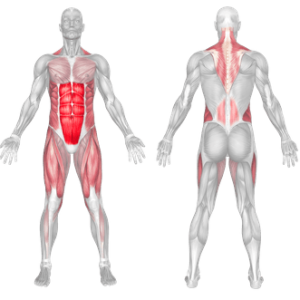plank
HOW TO PLANK
- Keep the spine neutral; engage in “abdominal stabilization” by pulling abdominal muscles.
- Lower the shoulder blades, activating the anterior dentate muscles and the lower parts of the trapezius muscles.
- Do not round or bend your back. Keep your pelvis in a neutral position.
- Do not slouch or hunch. Keep your chest flat and the shoulder blades flattened.
- Do not hold your breath. Breathe freely and naturally.
Its main goal is to maintain stabilization and balance of all parts of the body. Start at 10 second intervals and gradually move on to 60 second intervals.
PLANK BENEFITS
- The plank is a bodyweight exercise. As a multi-functional movement, the plank not only targets your abdominal muscles but also the spine and hip. Plank strengthens and tightens your entire body, improves your posture and balance, reduces body fat, and can help boost your metabolism.
- Exercises such as the “plank pose” help strengthen the stamina of stabilizing abdominal muscles. It can also help relieve back pain associated with a weakening of the function of the stabilizing muscles of the body.
- Planks are a versatile exercise that targets many of the most important muscle groups in the body, so they can be applied by anyone to improve endurance and overall body strength.
MUSCLES WORKED IN PLANK







